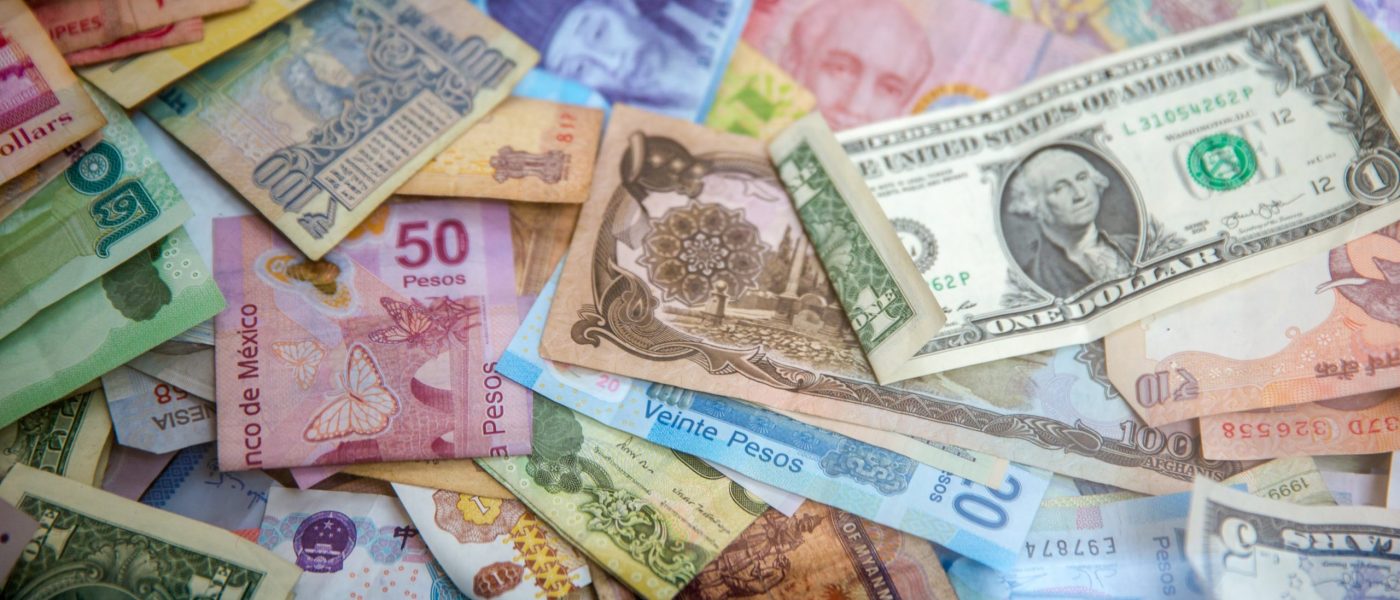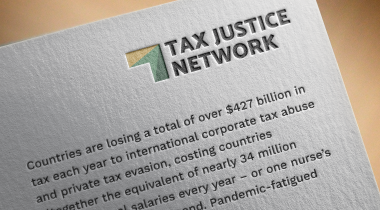
Tax Justice Network ■ Tax Justice Network’s offshore wealth estimates have just been validated by the OECD

As we announced last week, the OECD has published data showing that financial accounts holding more than ten trillion euros are now the subject of multilateral, automatic information exchange – a longstanding tax justice goal that the OECD had long resisted. Now James Henry – a senior adviser to Tax Justice Network, former chief economist for McKinsey and author of the Price of Offshore studies – explains how this data represents not only a major advocacy success, but also confirms the approach of those earlier estimates.
Guest blog: James Henry, senior advisor to the Tax Justice Network
Since 2012, our approach to estimating “offshore wealth” has relied on at least three independent methods to triangulate on the size of what is really the largely still hidden, untaxed “eighth continent” of private offshore wealth. A number of key points from the OECD release and recent research are worth highlighting here.
1. The new OECD data support our estimates and our methodology.
The OECD’s report is not only consistent with Tax Justice Network’s basic size and growth estimates. It also underscores the fact that our estimation approach is uniquely able to leverage the new data generated by reforms such as automatic exchange of information, and beneficial ownership registration — the A and B of the Tax Justice Network’s ABC of tax transparency, that it has fought hard for. This is a virtuous cycle indeed.
The OECD data relate only to the relatively narrow class of financial accounts that are currently reportable under their Common Reporting Standard (CRS). In addition, because of the USA’s refusal to cooperate, and the piecemeal exchange process where only some bilateral relationships are ‘active’, a great volume of theoretically CRS-reportable accounts are excluded.
For the total of accounts subject to automatic information exchange now to exceed $11 trillion, even with these caveats, confirms the broad reasonableness of our $24-$36 trillion estimate (for 2014). As a side issue, it also highlights how narrow is the basis of Gabriel Zucman’s $7.6 trillion estimate for the same year. Zucman’s methodology excludes many countries, and many types of financial assets, so it is not unexpected that even the limited OECD data significantly exceed that estimate.
2. Our estimates and methods also take into account a (growing) number of other offshore asset classes. Recent improvements in their measurement have also yielded results that are consistent with our earlier estimates.
Our more diversified, open-ended approach to estimation allows us to take advantage of improved direct measures of other asset classes — for example, offshore reserve currencies (now perhaps $2 trillion); internationally traded e-currencies ($500 billion); offshore gold, other precious metals, and gems ($1-$2 trillion); private art collections and other collectables; private “untraded” loans; private equity; minority positions in hedge funds; international real estate ($5-$10 trillion); and private jets and yachts, etc.
3. The Tax Justice Network’s offshore estimates show the likely scale of a thriving global haven industry.
Our approach to measuring “flight wealth” tackles the basic question begged by all discussions of “illicit financial flows” and “capital flight”: just what becomes of the money when it leaves the source countries? Where are the missing “stocks” that correspond to the “flows”? How much is consumed? How much is reinvested? At what yields? Most important — who manages all this loot?
What’s at stake here is not just numerology. Our larger estimates imply the existence of a large, lucrative, influential “global haven industry”. This industry cuts across individual havens, and is populated by the world’s largest hedge funds, banks, law firms, accounting firms, corporate registries, and a whole lot of lobbyists who are well paid to keep the whole show going across the world’s many financial secrecy jurisdictions. Quantifying this industry’s global scale highlights the importance of tackling these “enablers” on a cross-haven basis.
4. Our other recent offshore estimation work has turned up still more exciting findings:
- The critical role of “kleptocratic” regimes like Russia and China in the recent surge of developing country flight wealth.
- The fact that the “implicit” flight generated by unrecorded reinvestments of offshore financial wealth is a significant portion of total flight wealth — and that for many countries it continues to grow long after initial flight flows or illicit financial flows have receded.
- The fact that developing countries as a whole, as well as many individual countries, are basically net creditors of ‘First World’ countries, once offshore flight wealth as well as official reserves and foreign debt are taken into account. Conceptualising and measuring the opportunity costs of this bizarre situation is a work in progress.
5. The “ offshore” world has shifted since we did our 2012 estimates.
This is an important topic, from the standpoint of financial secrecy: the rise of “onshore secrecy,” real estate, and other asset classes, the precise secretive structures that financial services firms use to handle wealthy clients, and the changing role of key havens like the US and the UK. It has important implications for future measurement efforts. But I will leave it there for now…
Estimates are inevitably uncertain – and all the more so when those carrying out the estimated activities are determined to hide them. Our Price of Offshore estimates illustrated the scale of the global haven industry, and while they have not been without criticism, the very best rejoinder just came from the OECD in the form of published data.
Related articles
One-page policy briefs: ABC policy reforms and human rights in the UN tax convention

The “millionaire exodus” visualised
The millionaire exodus myth
10 June 2025

The Financial Secrecy Index, a cherished tool for policy research across the globe

Did we really end offshore tax evasion?
The State of Tax Justice 2024
Submission to EU consultation on Anti-Tax Avoidance Directive (ATAD)
6 November 2024

How “greenlaundering” conceals the full scale of fossil fuel financing


